Will the floating market "sink"? That is not only the concern of Cai Rang floating market traders but also the regret of many people who love this "floating culture" of Can Tho city.
Merchants are generous and spendthrift...
When the sun has not yet risen on the Hau River, Cai Rang floating market has already woken up, bustling with boats on the wharf and in the river. Mrs. "Ba Do", the owner of 3 small boats, has been busy since 2 am transporting traders and individual buyers to and from the floating market. Mr. Trang Xen (44 years old), a trader from Go Quao, Kien Giang , is also busy delivering pineapples to wholesale traders...
"Do you sell retail?", I asked Mr. Trang Xen, who was blushing as he looked at the strange customer. "Not retail, are you giving it away?", Mr. Xen smiled and quickly peeled a ripe, fragrant pineapple and gave it to me. I had heard that the floating market traders were "generous and willing to spend", now I felt like I had a warm answer in the middle of the early morning market session.
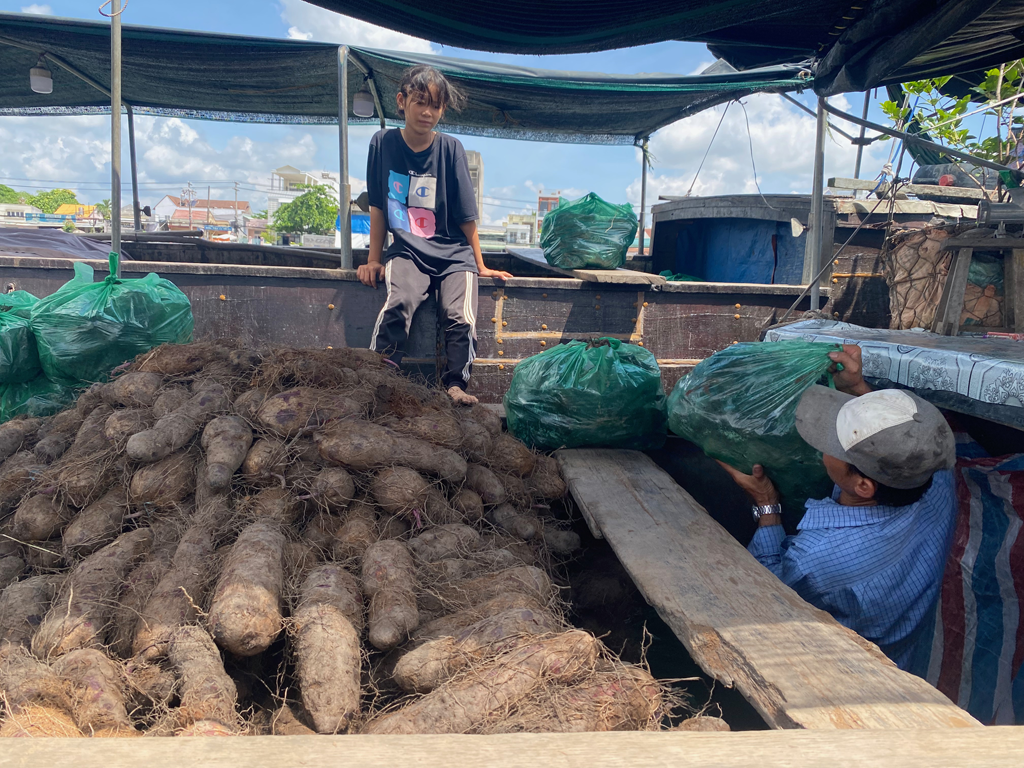
Mr. Thai and his daughter are delivering sweet potatoes to customers.
The river section under Cai Rang Bridge is now filled with the lively sounds of boat engines, the cries of selling food, drinks or groceries from the ferry boats. Occasionally, tourist boats pass by, causing many wholesale boats or small boats to sway violently as if they were about to… get drunk because of the big waves.
Colorful bamboo poles are placed on the bow of the boat, a unique feature of the floating market. A bamboo pole is a type of signboard on the river, made from a bamboo pole, with a typical item that the merchant is selling hanging on the tip of the pole. There are pumpkin poles, watermelon poles, pineapple poles, sweet potato poles, etc.
Mr. Dang Van Ut (40 years old), the husband of Mrs. "Ba Do", a hired boatman, asked me a difficult question: "What is "hanging but not selling, selling but not hanging"?", then laughed heartily at the bewildered face of the boat passenger. Then he explained: "Hanging but not selling are the poles people hang clothes on, because normally, whichever boat hangs what kind of pole is sold, like hanging pineapples to sell pineapples, hanging squash to sell squash. But the people here use their boats as homes, living on them, so they also have to hang clothes to dry, so it's called "hanging but not selling". And "selling but not hanging" are the boats that hang poles with leaves but don't sell leaves, they sell... boats. Selling boats without hanging the boat."
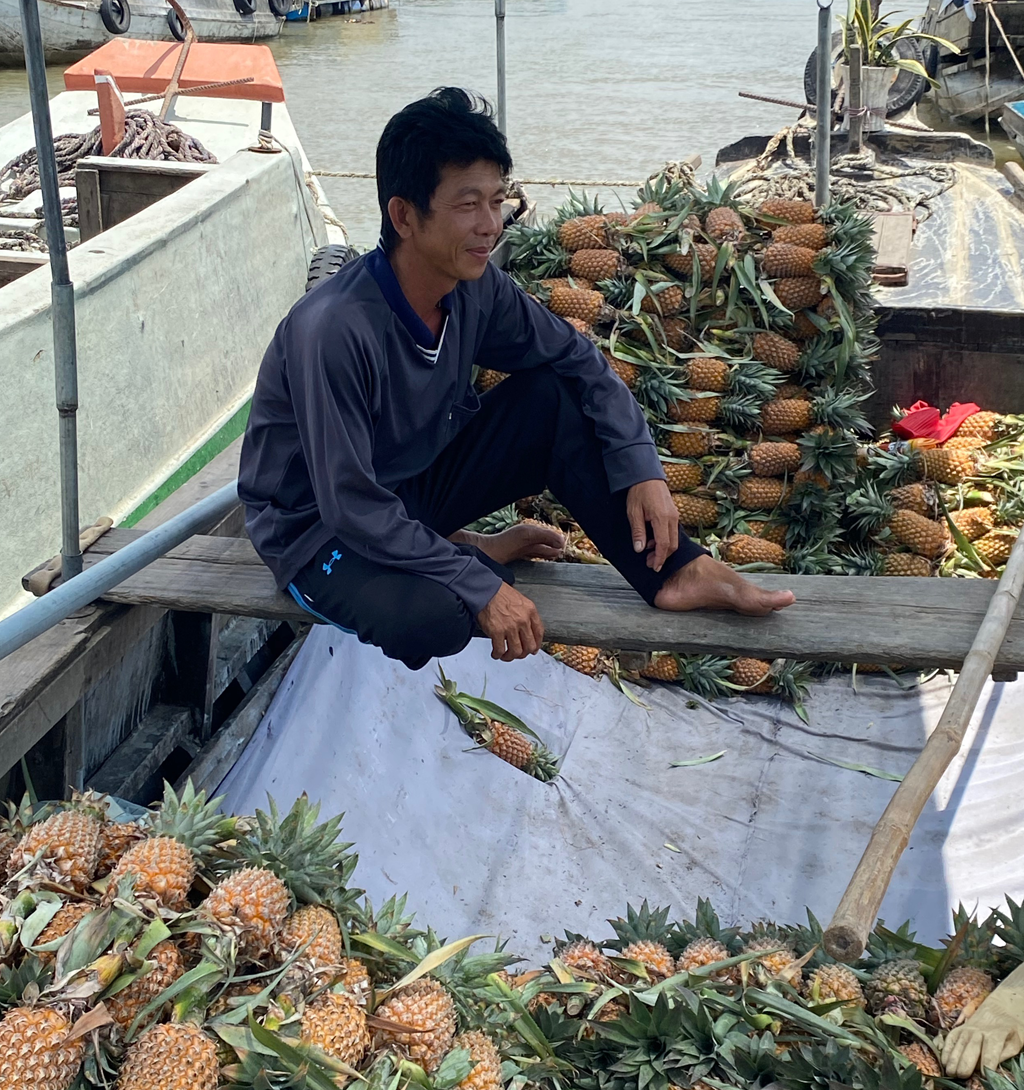
Mr. Trang Xen with the pineapple boat
Uncle Ut's boat passed by an empty boat rocking on the river, with dry palm leaves hanging from the roof. He lamented: "The market is so remote these days, there are so many boats for sale. I have to do many jobs, ferrying people and driving motorbike taxis to support my wife and two children."
Goods in Cai Rang floating market in the past and present are mainly divided into many groups such as vegetables, fruits, groceries, fresh and cooked food. Another activity that also creates prosperity for the market is the boats carrying people, selling regional specialties such as fruits, food and drinks to merchants and tourists. Boats selling vermicelli soup, rice noodles, dumplings, bread, and fruits are classified as "floating" goods and services of the market as an attraction for tourists from afar.
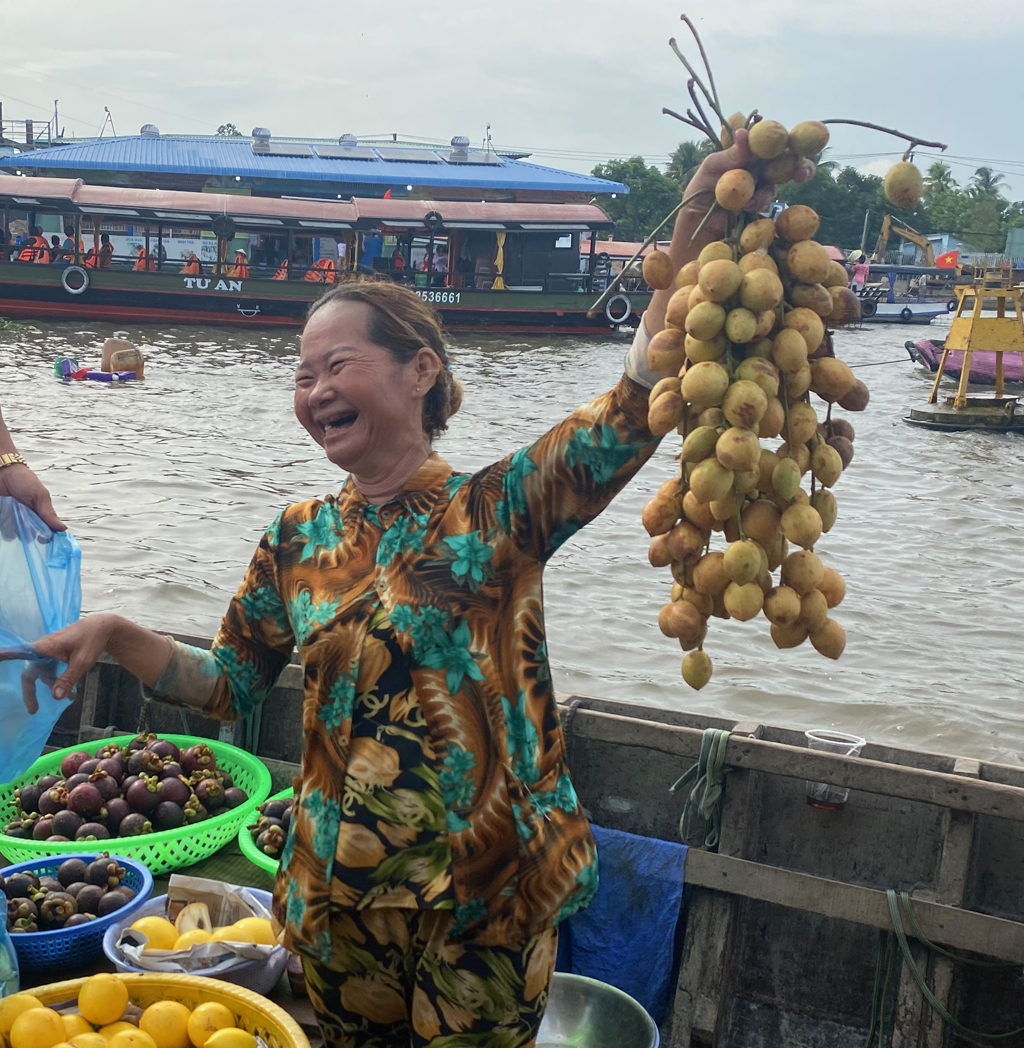
Ms. Nguyen Thi Trang, fruit vendor on the floating market
Desolate scene of the crowded ferry market
There is no happier life than the life of a merchant. Going down to the sea to get rice from the market and water from the river is a folk song about the life of a merchant. But the day we arrived at the early market, the market scene seemed deserted although there were still boats running busily. Most of the boats carrying tourists rushed along the newly built embankment, looking up from the river surface, you could only see high, white walls.
Mr. Trang Xen has dark skin and looks much older at the age of 44. He sits sadly watching the tourist boats passing by and the unsold pineapples for several days now. His family has nearly 4 hectares of pineapples in Go Quao, Kien Giang. Xen and his brothers all go by pineapple boat. "I find trading less difficult than farming. Every time I go back to my hometown, I get pineapples and leave right away. My life is mainly on the boat," Mr. Xen said.
In the floating market today, Xen and his brother are two rare remaining traders who buy their own goods and transport them by boat from their fields to Cai Rang floating market. They often go to Kien Giang to get pineapples, driving their boats for about 8 hours continuously to the floating market to sell to traders. When asked why Xen doesn't transport them by road for more convenience, he said: "This pineapple is easy to crush, it takes a lot of effort to stack it back and forth by car, and it will crush it, which is a capital loss. And I've been doing boats for generations... I take the effort as profit."
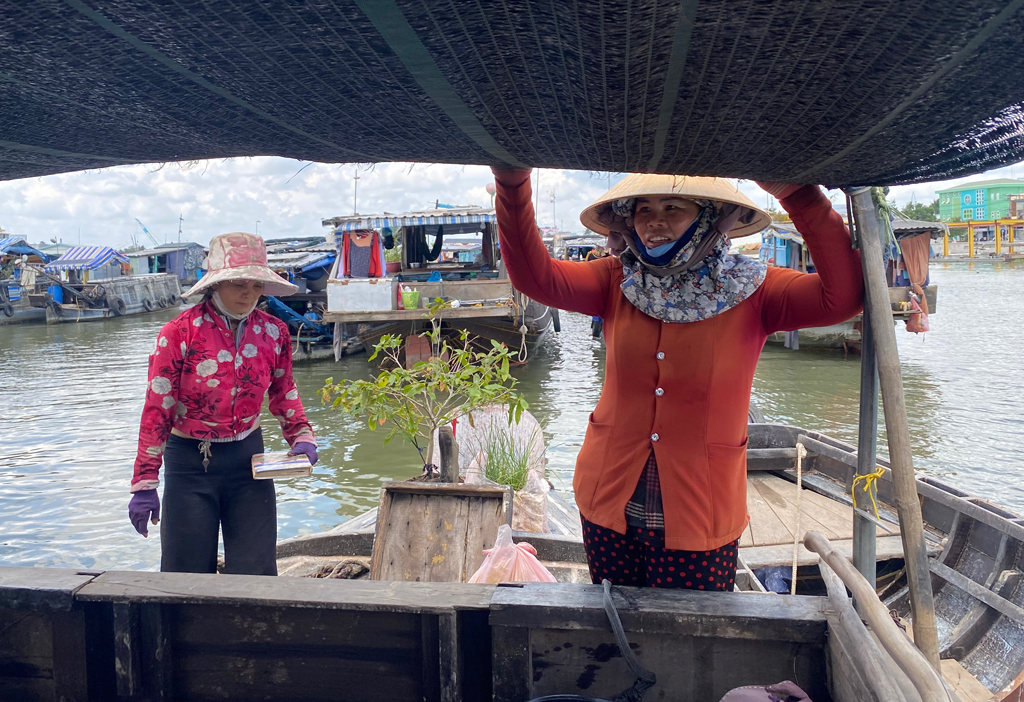
Ms. Nga (left) and her customer
In his hometown, Mr. Xen's family's several hectares of pineapples each harvest about 30,000 fruits. When his garden runs out, he goes to other fields to buy "dead price" (buying at the same price with the gardener for the whole year, taking the profit and loss). Sometimes when the pineapples go up, he makes a profit, but when the pineapples go down, he is worried to the point of losing sleep. Like this time, the two Xen brothers took two boats to the floating market to sell about 20,000 pineapples, but for 5 days they have been selling them at 5,000 VND/fruit to recoup capital. "Buying dead price was 10,000 VND/fruit but selling for only 8,000 - 9,000 VND/fruit. Usually, it would be sold out in a day or two. The price of pineapples has gone down so much that this trip lost nearly 40 million VND," Mr. Xen looked into the distance as the market gradually ended.
Cai Rang floating market is divided into many typical "hamlets": melon hamlets, cassava hamlets, sweet potatoes, pineapple hamlets, etc. Boat owners are mainly from Hau Giang and Kien Giang regions. There are wholesale traders in the floating market from their grandparents' time until their children take over the business.
In the sweet potato hamlet, there is the family of Mr. Tran Van Thai (43 years old). Mr. Thai and his wife have two boats of sweet potatoes for wholesale sale at the floating market. Ms. Le Thi Kim Nga (40 years old), Mr. Thai's wife, is busy in the middle of the boat full of dirt, arranging sweet potatoes for wholesale traders. In the harsh sunlight on the river, even though Ms. Nga is wearing a thick shirt, covering her face, she still cannot hide her sunburned skin. She wipes her sweat and says: "Of three children, one is only 12 years old and has to drop out of school to follow the boat, the other two are sent to their grandmother on shore to go to school. The market is slow this time, and tourism is running all the time, making business difficult, so we probably have to leave the market and go ashore"... (to be continued)
Cai Rang floating market is located in Le Binh Ward, Cai Rang District, in the heart of Can Tho City. Writer Son Nam once quoted a folk song about the hustle and bustle of the market: Cai Rang, Ba Lang, Vam Xang, Xa No. I love you, so I bought a boat. Let you go back and forth to see what I think...
Over time, floating markets in the Mekong Delta in general and Can Tho in particular have somewhat faded away. To preserve and promote the unique culture of this river region, in 2016, the Ministry of Culture, Sports and Tourism recognized Cai Rang floating market in Can Tho city as a national intangible cultural heritage.
Source link



![[Photo] Prime Minister Pham Minh Chinh chaired a meeting of the Steering Committee on the arrangement of public service units under ministries, branches and localities.](https://vphoto.vietnam.vn/thumb/1200x675/vietnam/resource/IMAGE/2025/10/06/1759767137532_dsc-8743-jpg.webp)
![[Photo] Prime Minister Pham Minh Chinh chairs a meeting of the Government Standing Committee to remove obstacles for projects.](https://vphoto.vietnam.vn/thumb/1200x675/vietnam/resource/IMAGE/2025/10/06/1759768638313_dsc-9023-jpg.webp)












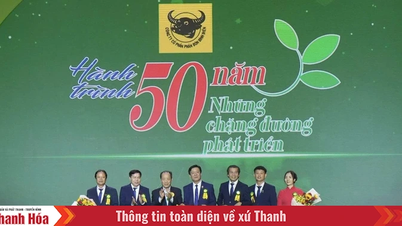




























































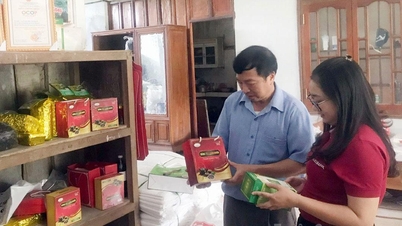

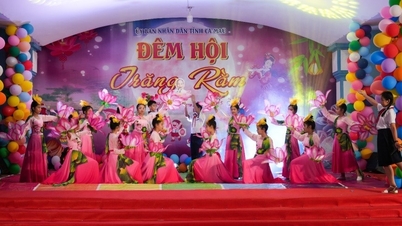






















Comment (0)